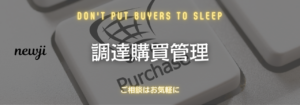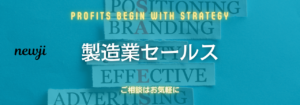- お役立ち記事
- “Revolutionizing the Future: Japan’s Pioneering Advances in Silicon Carbide (SiC) Manufacturing”

“Revolutionizing the Future: Japan’s Pioneering Advances in Silicon Carbide (SiC) Manufacturing”

目次
Introduction
Japan has long been synonymous with manufacturing excellence and technological innovation.
In recent years, the country’s advancements in Silicon Carbide (SiC) manufacturing have positioned it at the forefront of the global semiconductor industry.
Silicon Carbide, known for its superior properties, is a critical material in various high-performance applications including electric vehicles, renewable energy systems, and advanced electronics.
This article explores Japan’s pioneering strides in SiC manufacturing, delving into the procurement and purchasing perspectives, supplier negotiation techniques, market conditions, and best practices essential for leveraging Japan’s SiC capabilities to revolutionize the future.
Overview of Silicon Carbide (SiC) in Manufacturing
Importance of SiC in Modern Technologies
Silicon Carbide is a semiconductor material renowned for its exceptional thermal conductivity, high electric field breakdown strength, and resistance to thermal shock.
These properties make SiC indispensable in applications that require high efficiency and reliability.
In the automotive industry, SiC is used in power electronics for electric vehicles, enabling longer battery life and faster charging.
In the energy sector, SiC components enhance the efficiency of solar inverters and wind turbines.
Additionally, SiC finds applications in aerospace, telecommunications, and industrial machinery, driving advancements across multiple high-tech fields.
Global Demand and Market Trends
The global demand for Silicon Carbide has surged, driven by the expanding electric vehicle market and the push for renewable energy solutions.
Analysts project that the SiC market will continue to grow at a compound annual growth rate (CAGR) of over 20% in the coming years.
Key drivers include the need for more efficient power devices, stricter emission regulations, and the proliferation of high-performance electronic devices.
As technology evolves, the demand for high-quality SiC materials that meet stringent performance criteria has never been greater, making strategic procurement essential for manufacturers.
Japan’s Role in SiC Manufacturing
Historical Context and Development
Japan’s journey in SiC manufacturing began in the mid-20th century, driven by the country’s post-war industrial boom and a commitment to technological excellence.
Early investments in research and development laid the foundation for Japan to become a leader in SiC production.
Over the decades, Japanese companies have continuously innovated, improving SiC purity, structural integrity, and scalability of production processes.
This relentless pursuit of quality and efficiency has cemented Japan’s reputation as a premier source of high-performance Silicon Carbide.
Key Japanese Manufacturers and Innovations
Several Japanese companies stand out in the global SiC market, each contributing unique innovations and maintaining high standards of quality.
For instance, Cree Japan Inc. has developed advanced SiC wafers that offer superior performance in power electronics.
Mitsubishi Electric Corporation has pioneered integrated SiC solutions for automotive and industrial applications.
Sumitomo Electric Industries specializes in high-purity SiC substrates, essential for the production of reliable semiconductor devices.
These companies, among others, are at the cutting edge of SiC technology, driving advancements that shape the future of various high-tech industries.
Procurement and Purchasing in Japanese SiC Manufacturing
Advantages of Sourcing SiC from Japan
Procuring SiC from Japan offers numerous advantages, starting with the assurance of high quality and reliability.
Japanese manufacturers adhere to stringent quality control standards, ensuring that the SiC materials meet or exceed industry specifications.
Additionally, Japan’s advanced manufacturing technologies enable the production of SiC components with exceptional precision and consistency.
The country’s robust intellectual property framework also ensures that innovations and proprietary technologies are protected, providing buyers with confidence in the uniqueness and superiority of their SiC products.
Moreover, established supply chains and strong logistical infrastructure in Japan facilitate timely and efficient delivery, crucial for maintaining production schedules.
Disadvantages and Challenges
Despite the benefits, sourcing SiC from Japan presents certain challenges.
One of the primary drawbacks is the higher cost associated with Japanese-manufactured SiC compared to some other global sources.
These costs are reflective of the advanced technologies and superior quality offered but can impact the overall procurement budget.
Cultural and language barriers may also pose challenges in communication and negotiation, potentially complicating the procurement process.
Furthermore, geopolitical factors and trade policies can influence import regulations and tariffs, introducing additional uncertainty and complexity.
Navigating these challenges requires strategic planning and a deep understanding of the Japanese business landscape.
Supplier Negotiation Techniques with Japanese Manufacturers
Cultural Considerations
Understanding Japanese business culture is paramount when negotiating with Japanese SiC suppliers.
Japanese companies place a high value on respect, harmony, and long-term relationships.
Formalities such as exchanging business cards with both hands and maintaining a humble demeanor are important.
Building trust is essential, as Japanese suppliers are more likely to engage in successful negotiations with partners who demonstrate commitment and reliability.
Patience and persistence are key, as decision-making processes in Japan can be more deliberate and time-consuming compared to Western counterparts.
Effective Communication Strategies
Clear and respectful communication is critical in negotiations.
Employing a bilingual negotiation team or utilizing professional translators can enhance understanding and reduce the risk of miscommunication.
Listening actively and acknowledging the supplier’s perspectives fosters a collaborative atmosphere.
Presenting well-researched proposals that align with the supplier’s capabilities and business objectives can facilitate mutual agreement.
Moreover, transparency regarding your company’s needs, expectations, and constraints helps in finding common ground and developing solutions that benefit both parties.
Building Long-term Partnerships
Japanese manufacturers prioritize long-term relationships over short-term gains.
Demonstrating a commitment to a lasting partnership can significantly enhance negotiation outcomes.
This involves consistent communication, reliable orders, and shared goals for future growth.
Investing in joint development projects and aligning strategic interests can strengthen the bond between buyers and suppliers.
Such partnerships not only lead to better negotiation terms but also foster innovation and continuous improvement in product quality and supply chain efficiency.
Market Conditions and Competitive Landscape
Supply Chain Dynamics
The SiC market is influenced by complex supply chain dynamics, including raw material availability, production capacities, and logistical considerations.
Japan’s SiC manufacturers often rely on a combination of domestic and international sources for raw materials.
Global disruptions, such as those caused by pandemics or geopolitical tensions, can impact supply chain stability and lead to fluctuations in SiC availability.
Understanding these dynamics is crucial for effective procurement planning, enabling buyers to mitigate risks and ensure a steady supply of SiC materials.
Price Fluctuations and Cost Management
Prices of Silicon Carbide are subject to fluctuations driven by factors such as demand surges, raw material costs, and changes in production capacities.
Japanese SiC manufacturers, known for their high-quality output, may command premium prices.
Effective cost management strategies, including long-term contracts, hedging against price volatility, and exploring alternative suppliers, can help stabilize procurement costs.
Additionally, leveraging Japan’s advanced manufacturing technologies can lead to more efficient use of SiC materials, reducing waste and lowering overall costs.
Best Practices in Procuring SiC from Japan
Due Diligence and Supplier Evaluation
Conducting thorough due diligence is fundamental to successful procurement.
This involves evaluating potential suppliers’ financial stability, production capabilities, quality control measures, and compliance with industry standards.
Visiting manufacturing facilities and meeting with key personnel can provide valuable insights into a supplier’s operations and commitment to quality.
Assessing past performance, including the ability to meet delivery schedules and handle crisis situations, is also essential in selecting reliable partners.
Quality Assurance and Control
Ensuring the quality of SiC materials is critical for maintaining the performance and reliability of end products.
Implementing stringent quality assurance protocols, such as incoming inspections and regular audits, helps in maintaining high standards.
Collaborating with Japanese suppliers to understand their quality control processes can facilitate better integration of SiC materials into your production workflows.
Investing in joint quality initiatives and continuous improvement programs can further enhance product quality and reduce defect rates.
Logistics and Delivery Optimization
Efficient logistics are crucial for timely procurement and minimizing delays.
Working closely with Japanese suppliers to plan and coordinate shipments can enhance delivery reliability.
Considering factors such as lead times, transportation modes, and inventory management strategies can optimize the supply chain.
Utilizing advanced logistics technologies, like real-time tracking and automated ordering systems, can improve visibility and responsiveness, ensuring that SiC materials are delivered as needed.
Future Trends in SiC Manufacturing and Procurement
Technological Advancements
The future of SiC manufacturing is set to be shaped by continuous technological advancements.
Japanese manufacturers are investing in research and development to enhance SiC purity, increase production efficiencies, and develop new applications.
Advancements in wafer fabrication, doping techniques, and device integration are expected to drive improvements in SiC performance and expand its applicability.
Staying abreast of these technological trends enables procurement professionals to anticipate market shifts and secure access to the latest SiC innovations.
Sustainability and Environmental Considerations
Sustainability is becoming increasingly important in manufacturing and procurement practices.
Japanese SiC manufacturers are adopting eco-friendly production methods, reducing energy consumption, and minimizing waste.
Procurement strategies that prioritize sustainability can lead to more responsible sourcing, aligning with global environmental standards and consumer expectations.
Collaborating with suppliers on sustainability initiatives not only enhances corporate responsibility but also can lead to cost savings and improved brand reputation.
Impact of Global Policies and Trade Relations
Global policies and international trade relations significantly impact the SiC market.
Tariffs, trade agreements, and regulatory standards can influence procurement decisions and supply chain strategies.
Japan’s strong position in international trade networks facilitates smoother procurement processes, but shifts in trade policies can introduce uncertainties.
Monitoring global policy developments and maintaining flexible procurement strategies are essential for adapting to changing environments and mitigating risks associated with international trade.
Conclusion
Japan’s pioneering advances in Silicon Carbide manufacturing are set to revolutionize various high-tech industries, offering unparalleled quality and innovation.
From procurement and purchasing perspectives, sourcing SiC from Japan presents significant advantages, including superior product quality and reliable supply chains, despite certain challenges such as higher costs and cultural barriers.
Employing effective supplier negotiation techniques, understanding market conditions, and adhering to best practices are crucial for maximizing the benefits of Japanese SiC manufacturing.
As the global demand for high-performance semiconductor materials grows, Japan’s role in the SiC market will continue to be pivotal, shaping the future of technology and manufacturing on a global scale.
 資料ダウンロード
資料ダウンロード
QCD管理受発注クラウド「newji」は、受発注部門で必要なQCD管理全てを備えた、現場特化型兼クラウド型の今世紀最高の受発注管理システムとなります。
 NEWJI DX
NEWJI DX
製造業に特化したデジタルトランスフォーメーション(DX)の実現を目指す請負開発型のコンサルティングサービスです。AI、iPaaS、および先端の技術を駆使して、製造プロセスの効率化、業務効率化、チームワーク強化、コスト削減、品質向上を実現します。このサービスは、製造業の課題を深く理解し、それに対する最適なデジタルソリューションを提供することで、企業が持続的な成長とイノベーションを達成できるようサポートします。
 製造業ニュース解説
製造業ニュース解説
製造業、主に購買・調達部門にお勤めの方々に向けた情報を配信しております。
新任の方やベテランの方、管理職を対象とした幅広いコンテンツをご用意しております。
 お問い合わせ
お問い合わせ
コストダウンが利益に直結する術だと理解していても、なかなか前に進めることができない状況。そんな時は、newjiのコストダウン自動化機能で大きく利益貢献しよう!
(β版非公開)






